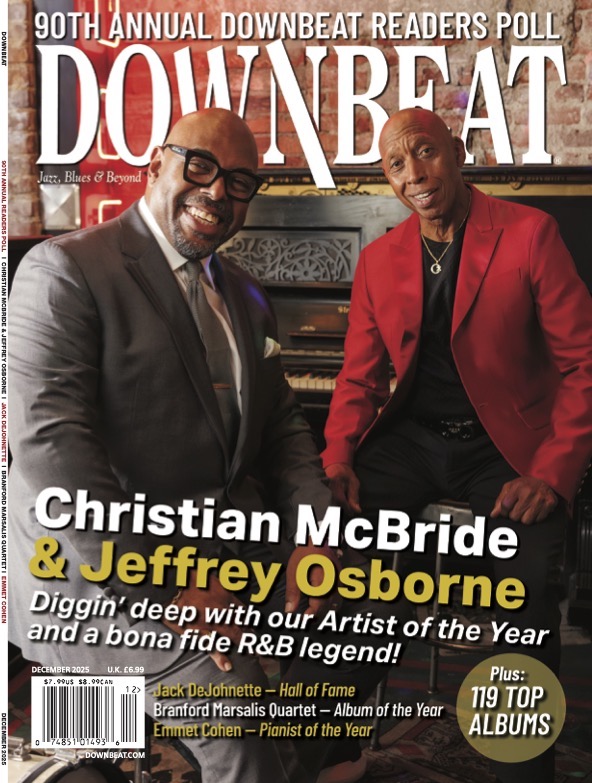Oct 28, 2025 10:47 AM
In Memoriam: Jack DeJohnette, 1942–2025
Jack DeJohnette, a bold and resourceful drummer and NEA Jazz Master who forged a unique vocabulary on the kit over his…
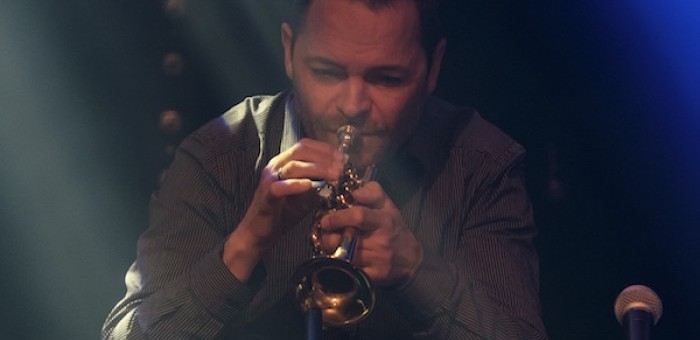
Arve Henriksen of Warped Dreamer performs at the 2016 Moers Festival in Moers, Germany.
(Photo: Elisa Essex/Moers Festival)Thanks to its adventurous annual music festival, the small northwestern German town of Moers has built up a legendary status over the past 45 years. Although the festival no longer features the word jazz in its title (organizers preferred the simpler “Moers Festival”), the original stance was determinedly angled toward free-blowing improvisation, with a reputation for uncompromising sounds.
Nowadays, jazz certainly remains the programming core, but there are frequent strays into the realms of rock, folk, electronic and contemporary classical. Such was the case for the festival’s 2016 edition, which ran from May 13–16.
Singer Cassandra Wilson was found here in her most unusual and toughened element, closing out the festival’s Saturday night in cahoots with the ensemble Harriet Tubman, a long-running trio of Brandon Ross (guitar and banjo), Melvin Gibbs (electric bass) and J.T. Lewis (drums).
This meant that the emphasis was on a breed of what can only be called ambient blues, with occasional outbreaks of rolling boogie, with Wilson actually playing electric guitar for much of the time. This teaming has only been operating during the last two or three years, and opportunities to witness it have been scarce.
The set opened with the trio establishing an atmosphere best described as “down home miasma,” akin to Jimi Hendrix, as played by Santo & Johnny. In contrast to Gibbs’ Booty Collins-esque bass burbles, Ross turned his banjo picking into an ethereal, softly clanking mantra.
Wilson strolled on confidently and repeated her “Let me be your fantasy tonight” tagline, then strode right into “Tomorrow Never Knows,” by The Beatles, which was delivered at a treacle-slow pace.
An extended build-up led to “Black Sun,” the title of this collaborative project. At its rocking-out peak, Wilson issued a gutsy, riffing guitar solo, which should have been way higher in the mix. A sludgy rattle that turned out to be “Miles Runs The Voodoo Down” (from Miles Davis’ Bitches Brew) chopped between two rhythmic sections, flipping from James Brown to Otis Rush in their stylistic push.
In this year of rapid change in Cuba, two of the island’s best pianists brought their bands to Moers on consecutive nights. The Harold López-Nussa Trio managed to amalgamate a fairly lounge-oriented jazz style with some hardened salsa and son elements, creating a complex combination.
Drummer Ruy Adrian López-Nussa demonstrated a speeding mastery, rotating around his variegated percussion set-up, then joining with his brother in a sparse piano-and-handclaps interlude. He came forward to play cajon on “Cimarron,” which was breezily rippling. At first bass-less, it led into some ferocious, hammering piano runs from the leader, followed by left-hand, low-ranging explosions that powered toward a rousing salsa finale.
The New York resident David Virelles offered an alternative manifestation of his Cuban heritage, the pianist’s jazz-rooted compositions infused with Santeria ritual aspects, courtesy of percussionist Román Diáz.
Beginning completely alone, Virelles had a Monkish tone, soon entering into a dialogue with Diáz, the pair eventually joined by bassist Thomas Morgan and drummer Eric McPherson. A locomotive groove was set up during Virelles’ solo, breaking up his phrases into unpredictable lengths. Virelles utilized brutal fist-detonations on the lower keys, striking glancing blows that hit the precise points to aid McPherson’s tripping beats.
Improvisation has always been central at this festival, and the weekend’s best set was a masterful illustration of sculpted freedom. Warped Dreamer is a collaboration between players from Belgium and Norway, featuring Teun Verbruggen (drums), Jozef Dumoulin (piano), Stian Westerhus (guitar) and Arve Henriksen (trumpet), with all four utilizing electronics.
They began informally, with zero pause for contemplation after the announcer’s introduction. Westerhus bowed his strings, Henriksen quickly set up a series of loops, and the guitarist unleashed an elephantine roar, initiating a groove. Verbruggen stuttered jungle beats as Henriksen adopted a robotic vocal extremity. This made Henriksen’s abrupt switch to choirboy innocence all the more startling, as Dumoulin stealthily scattered piano notes. In fact, the acoustic piano was all he could play, as his electric keyboards and equipment had been delayed at the airport.
Dumoulin’s acoustic contrast with his heavily FX-ed colleagues added an exciting dash of adventure, an exaggerated contrast. The quartet’s skill led to a rapid shuttling of soundscape styles, from minimal introspection to explosive rage. Henriksen was in an unusually freaky mood, a key influence over the band’s urgent shape-shifting invention. His small wooden flute blended seamlessly into altered trumpet tones, followed by a deranged gospel-blues rant.
The festival’s long-established Morning Sessions are also dedicated to free improvisation, the various player permutations being chosen by saxophonist Jan Klare, with overlapping sets on two stages.
An outstanding performance came courtesy of a two-drummer sextet, largely drawn from the Subway Jazz Orchestra, which had appeared on the main program the previous day. The trombone, tenor and alto saxophone front line commanded a vocabulary that rose from subtle flutterings up to gushing extremes. This was an inspired example of true freedom: the freedom to include trace elements not often found within free-jazz vistas.
The festival, however, ended on a downer. A few months prior there had been problems with the local government, relating to the guaranteeing of funding, with the Moers weekender in danger of being cancelled. In the end, all was well, and the event was saved, but this led to the artistic director of 11 years, Reiner Michalke, announcing his intention to resign from the position, which was set to last until 2020.
Michalke, citing the lack of support from the local municipality, said that discussions need to take place regarding the future of this festival. DB
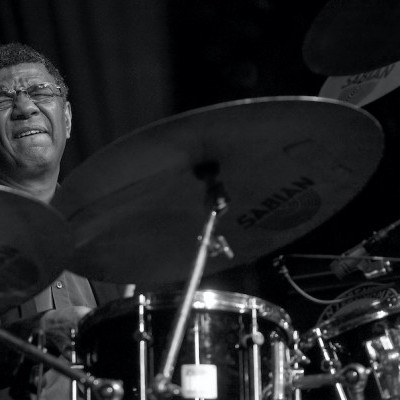
Jack DeJohnette boasted a musical resume that was as long as it was fearsome.
Oct 28, 2025 10:47 AM
Jack DeJohnette, a bold and resourceful drummer and NEA Jazz Master who forged a unique vocabulary on the kit over his…
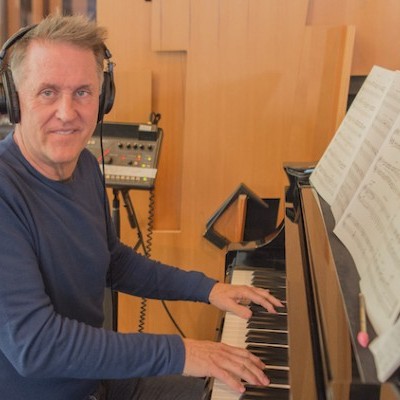
Goodwin was one of the most acclaimed, successful and influential jazz musicians of his generation.
Dec 9, 2025 12:28 PM
Gordon Goodwin, an award-winning saxophonist, pianist, bandleader, composer and arranger, died Dec. 8 in Los Angeles.…

D’Angelo achieved commercial and critical success experimenting with a fusion of jazz, funk, soul, R&B and hip-hop.
Oct 14, 2025 1:47 PM
D’Angelo, a Grammy-winning R&B and neo-soul singer, guitarist and pianist who exerted a profound influence on 21st…
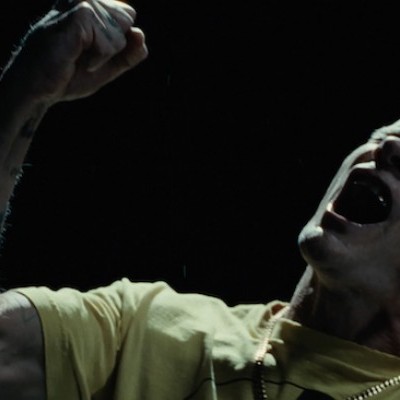
Flea has returned to his first instrument — the trumpet — and assembled a dream band of jazz musicians to record a new album.
Dec 2, 2025 2:01 AM
After a nearly five-decade career as one of his generation’s defining rock bassists, Flea has returned to his first…
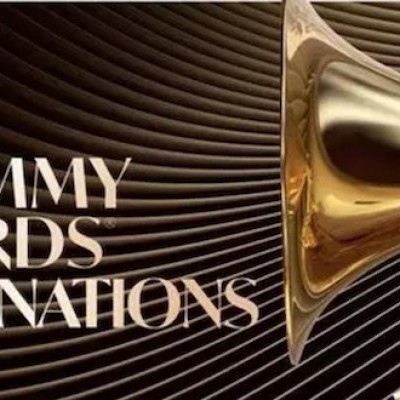
To see the complete list of nominations for the 2026 Grammy Awards, go to grammy.com.
Nov 11, 2025 12:35 PM
The nominations for the 2026 Grammy Awards are in, with plenty to smile about for the worlds of jazz, blues and beyond.…

